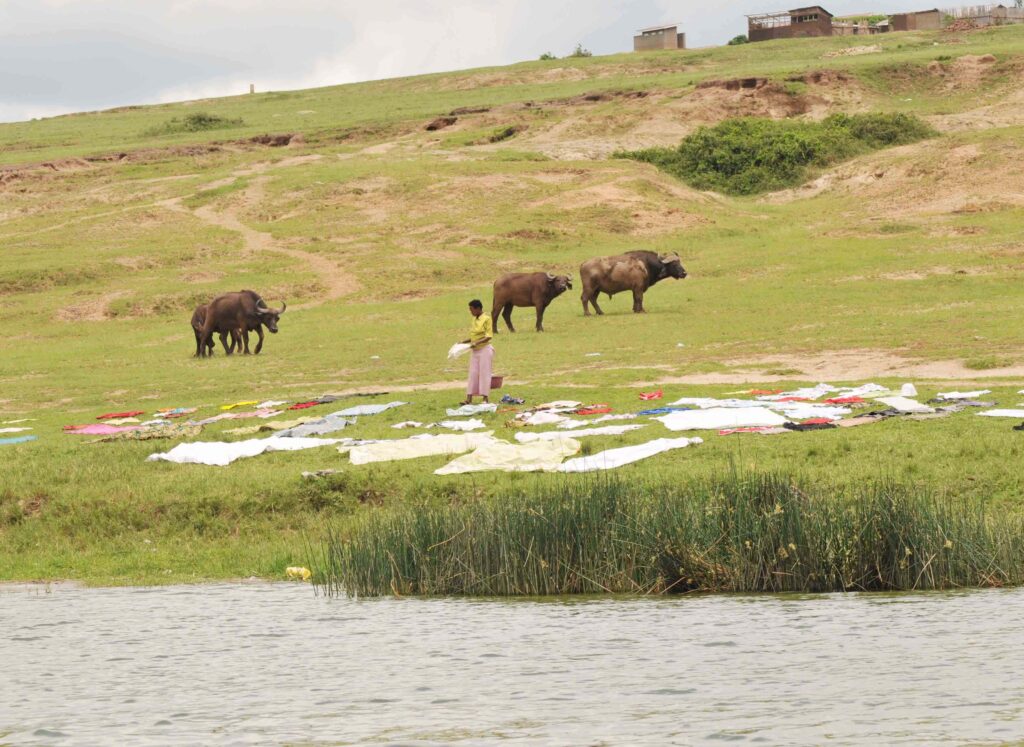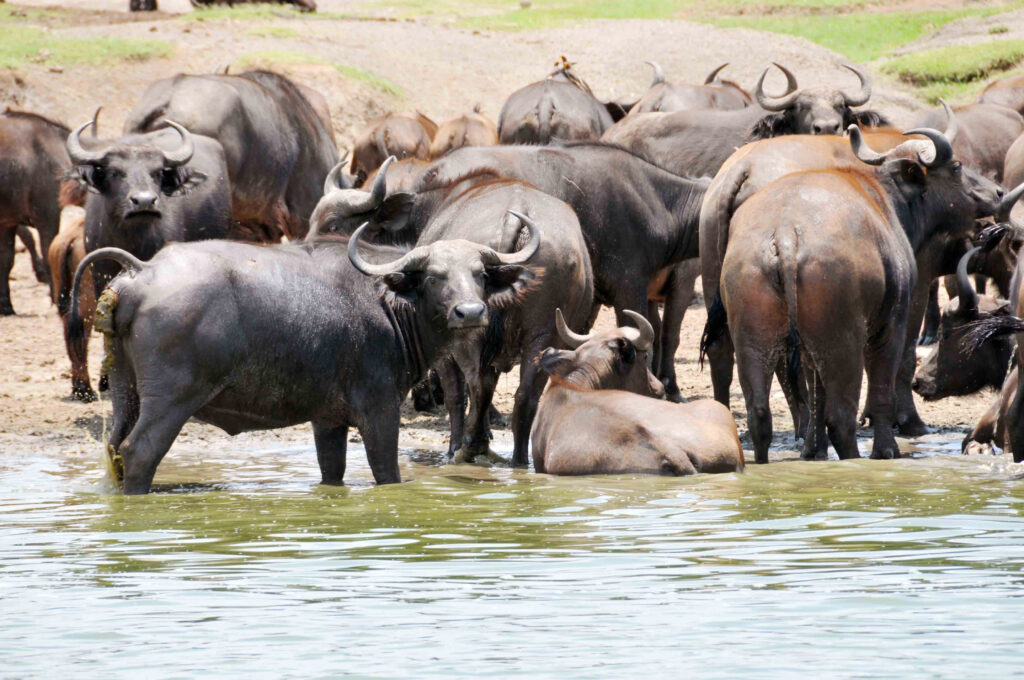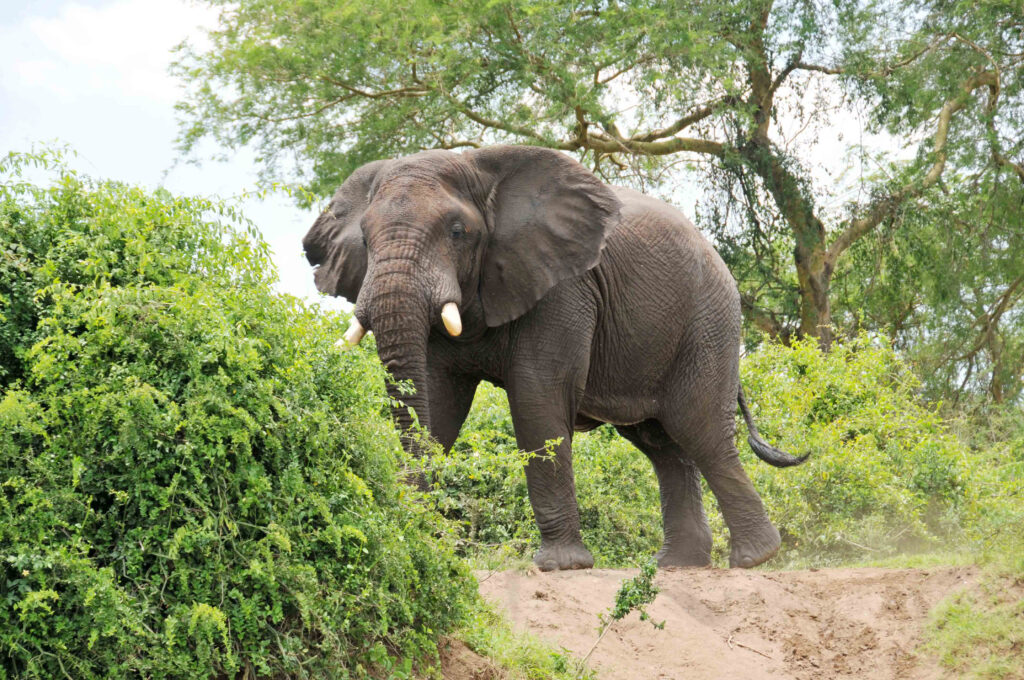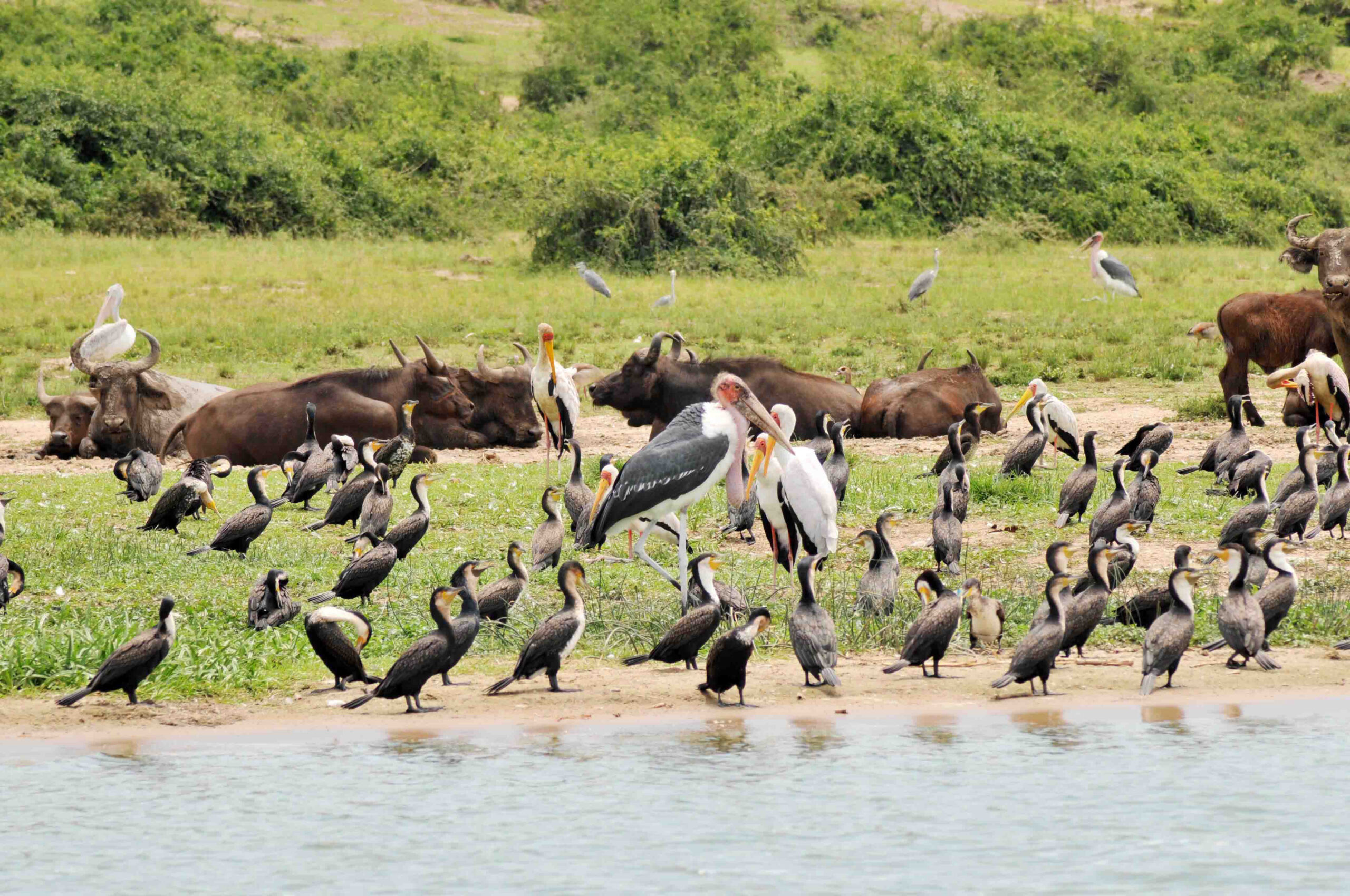By Kalungi Kabuye
I still remember my first encounter with a wild buffalo. It was in the Lake Mburo National Park, when a group of journalists were taken to the newly built camp. Part of the trip was a walk around the camp; no idea why someone would think a walk through a national park is a good idea, but we didn’t object and duly followed the guide/ranger.

About halfway through the walk, we came across 2 buffaloes. We had seen and passed many other animals including giraffes and all sorts of antelopes, so we thought the buffaloes were just another sight. But then we noticed that the ranger had stopped and was watching the buffaloes very closely. We stopped too, and looked at the buffaloes, which seemed agitated about something.
I had never been close to a wild buffalo before, and thought they were more or less like cows. But these were huge, massive animals. Totally black and looking very dangerous. The ranger then told us to walk very, very slowly backwards. Not to make any noise or sudden movements.
By then one of the buffaloes had started pawing the ground, and it took every control in my body not to turn around and run as fast as I could. Luckily we made it safely back to camp, and later that night, while we sat around a campfire and listened to the sounds of Capital Radio on a small portable radio I had brought along, the ranger explained that those two buffaloes were former alpha males that had been forced out of the herd. That they are usually bad-tempered as a result and very dangerous. So much for national park walks.
That incident came back to my mind a few years later as we cruised down the Kazinga Channel, which joins Lakes Edward and George in western Uganda. On the banks were hundreds and hundreds of buffaloes, more buffaloes than I’d ever seen before. Although they would turn and look at us as we cruised past, we were in no danger in the middle of the channel.

But then we saw a settlement along the banks, and a woman was putting out laundry to dry on the grass. Not very far from her were several buffaloes quietly grazing, almost like they were domesticated cows. Compared to the two we had encountered in Lake Mburo, these seemed very tame. But maybe there is something about the Kazinga Channel that makes everyone peaceful and calm.
There were also hundreds of hippos lazily basking in the sun, totally ignoring the boat. This was amazing because hippos are known to be the most aggressive animal in nature, and are responsible for the deaths of hundreds of people every year in Uganda. There really must be something magical about this stretch of water.
An amazing thing about the Kazinga Channel is that it is only 40 kilometres long, but the boat ride usually takes almost 2 hours; 40 kilometres and two hours of the most amazing boat cruise in the country.
The channel was formed at the same time as the western arm of the Great Rift Valley, and the volcanic activity that ensued formed two lakes, which were at first just craters. Melting snow from the top of the Rwenzoori mountains formed rivers which poured into and formed Lake George (named after an English king by Henry Morton Stanley in 1889).
The overflow from Lake George, a pretty shallow lake because of boulders from the Rwenzoris, formed the Kazinga Channel, which pours into Lake Edward (also named by Stanley for the then Prince of Wales). Water from Lake Edward flows to the River Semliki then into Lake Albert, and thus joins the River Nile that eventually pours into the Mediterranean Sea
This channel is among the most important features in Queen Elizabeth National Park (at 1,978sqkm the second largest National park in Uganda, but the most visited one). The park is a dry and hot area, lying at the bottom of the Rift Valley; and thousands of animals go to the channel to drink water.
The park hosts over 600 bird species (second highest in Africa and 6th highest in the world), and almost 100 species of mammals. On a good day, you might see all of them coming down to the channel for water.
There are thousands of African (Cape) buffaloes, which seem to coexist peacefully with the local human population. It was amazing seeing these wild animals a few meters away from that woman laying out her washing to dry. Neither the woman nor the animals seemed perturbed by the presence of the other.
The Kazinga Channel boat trip is very popular, and rightly so. Boats leave the landing stage below the Mweya Safari Lodge four times a day for the two-hour trip along the edge of the 1 km-wide channel. You can see both sides of the channel as you go along first on the southern edge as you head towards Lake George, and on the northern edge on the return trip.

Seeing buffaloes, elephants, crocodiles, and monitor lizards is a virtual guarantee. You can see the giant Nile Monitor Lizard, the biggest lizard that can be found in Africa, along with a wealth of bird life. You get to see fish eagles throwing their heads back and making the most extraordinary calls.
Up to 60 different species of birds are more or less guaranteed to be spotted, including the Black Bee-eater, black-rumped Buttonquail, 11 different species of Kingfisher, several Falcons, African skimmer, the Great White and Pink-Backed Pelicans, African Shoebill, Yellow Billed Stork, Great and Long Tailed Cormorants, Open-Billed Stork, Saddle Bill Stork, Darters, Black Crake, Jacana and many more.
In the late afternoon, you also get to see men from the fishing village of Kazinga, on the opposite shore of the channel to Mweya, setting out in their flimsy canoes for the night’s fishing. They go out at night to avoid the hippos (which graze on land at night and spend the days in the water).
It’s also interesting to watch elephants and goats interacting, not something you see in your average ‘Western world’ wildlife park. These goats are not wild so they run home just before it gets dark.

